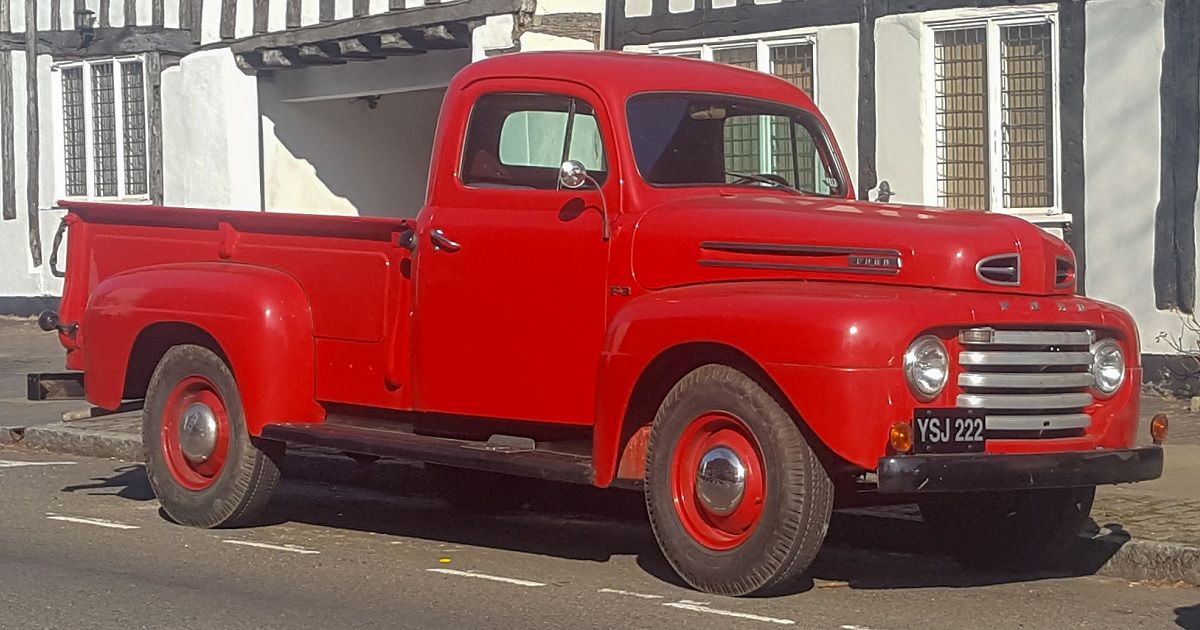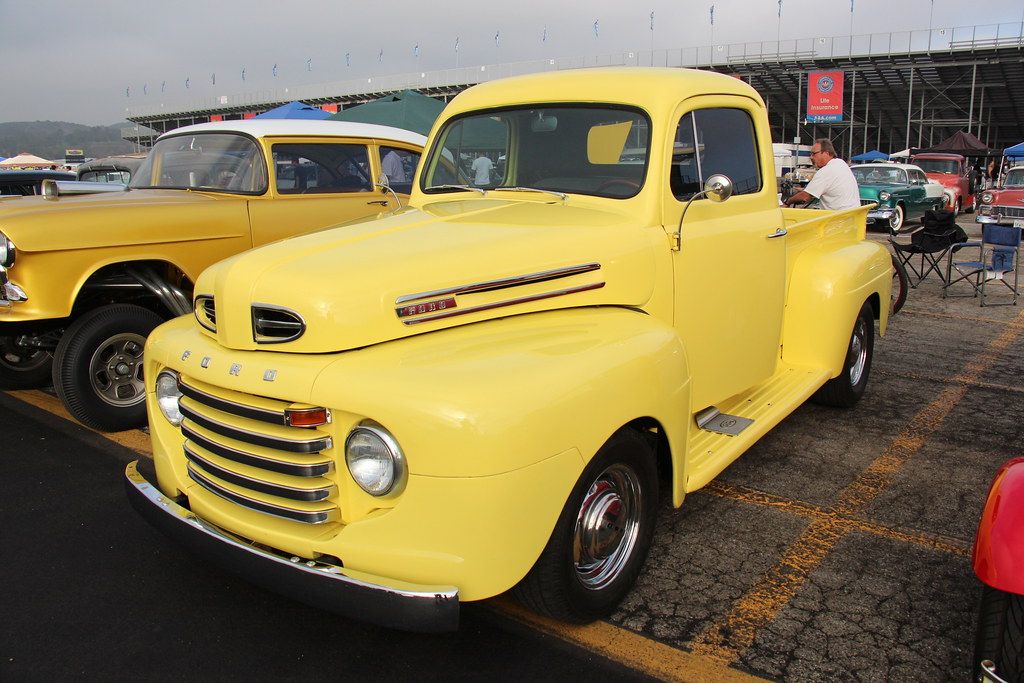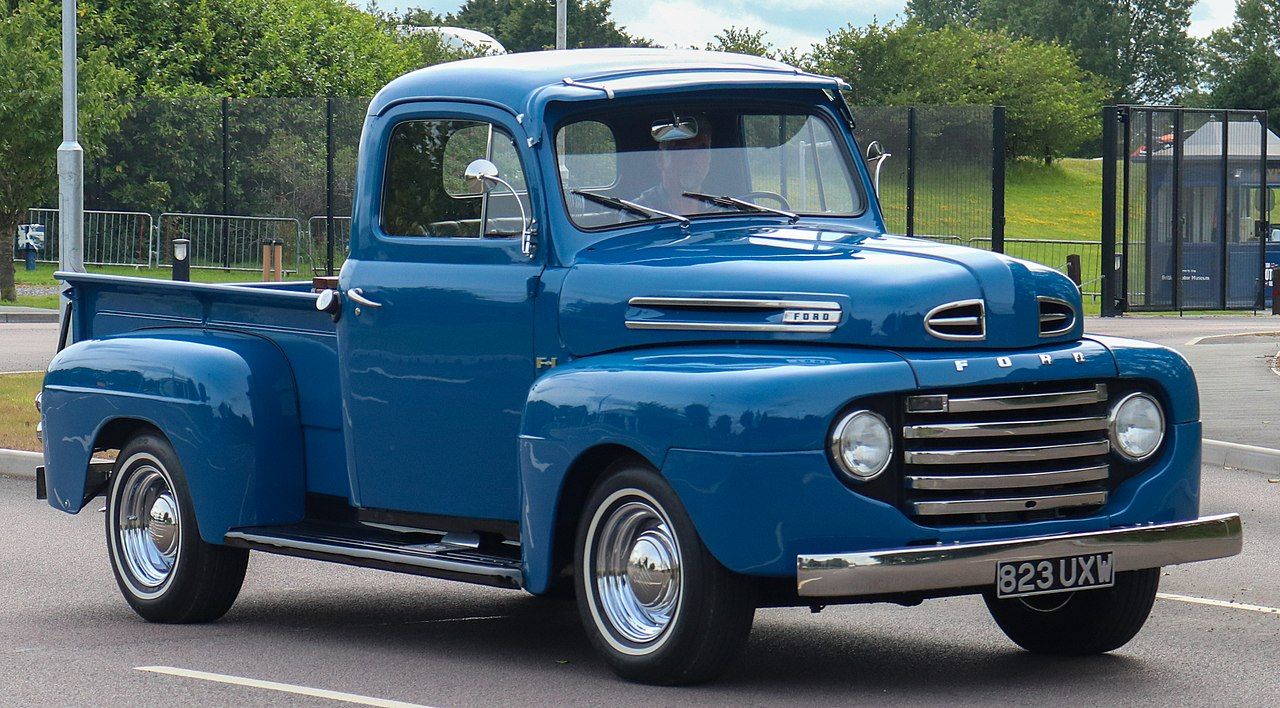Ford is one of the most prolific car-makers there are today, as they have been for nearly a century now. And pickup trucks are among their most popular options. Trucks accounted for 45% of all Ford sales in 2018, which is nearly half of all sales. The F-150 today is one of the most common vehicles that you can find on US roads and is the first vehicle that comes to mind when most people picture a truck. In 2018 Ford sold a hundred of them every hour. It carries such cultural weight that many of the people driving them rarely even use them for hauling, and simple want to enjoy driving around in a Ford truck.
But that all started with the original F-Series truck in 1948, though the 1948 model year was actually introduced in 1947. Ford wanted to target Chevrolet's sales figures, and to do that, they needed something that could beat Chevy's light truck offerings. They spent nearly a million dollars ($11,476,721 in today's money) developing it. Their goal was to make a truck that was easier to use, more comfortable, and had a roomier cab than its predecessors.
By all accounts, they succeeded at every mark, and in doing so they made a truck that blew away its competition. The first generation, running from 1947 to 1952, was the model that established Ford's dominance in post-war truck design that continues through to this day. It was an immediate hit and today it remains a true classic of workhorse vehicles.
Ford's F-series pickup trucks are ubiquitous today, but here’s what you should know about the original.
The Ford F-Series Platform
All of Ford's pre-war trucks had been built based on their standard car platforms. The 1948 F-Series, however, was their very first truck designed with a dedicated platform designed for a truck's needs from the start. It was the first-ever light truck that was neither an adapted passenger vehicle nor a scaled-down version of a heavier-duty truck.
This platform featured a third cross member bar which made it sturdy enough that Ford's medium trucks could also use the same platform. Another innovation was that the F-series were the first trucks to use telescopic double-action shock absorbers instead of the lever shocks that had been common in trucks up until that time. This reduced maintenance costs and gave the F-series a much better ride than its predecessors and competitors.
The F-Series Had A Solid Engine
The 1948 model year was offered with one of two engines. One was the same 95 hp inline-6 engine used in passenger vehicles. The other was a 100 hp V8 engine. A V8 engine in a truck may seem pretty standard today, but that was actually another innovation of the F-Series.
Ford was the only company to have the option of V8 engines in its light trucks until 1954. For the transmission, the F-1 came with a floor-shifting three-speed manual transmission as standard, with options for four and five-speed manual transmissions. That gave the F-1 a maximum weight rating of 4,700 lbs, with the F-2 beefed up to 5,700 lbs.
Variants And Price
The first generation of the F-Series covered a range of chassis in a number of variants, from the F-1 through the F-8. These were numbered according to their capacity, with the F-1 as the lightest-capacity offering and the F-8 as the most heavy-duty. The F-1, F-2, and F-3 were sold either as pickup trucks or as a panel van based on the pickup struck with essentially the only difference being whether the cargo area was covered.
The F-4, meanwhile, was intended as a light-duty commercial truck. The F-5 and F-6 were medium-duty trucks offered as either a standard configuration, a cab-over-engine configuration, or as a school bus chassis. Finally, the F-7 and F-8 "Big Job" were heavy-duty commercial trucks. All of these options let the F-series target every potential niche that a truck could fill and maximize Ford's sales of it.
The cost of a base-model F-1 in 1948 was $900, which translates to $10,329 in today's money. The cost of an F-3 with a V8 engine, meanwhile, was $1500, or $17,215. That made them great value compared to the price of a new truck in the modern-day, where a new 2022 F-150 starts at $29,640. But how much can you expect to pay if you want an original F-series today?
According to Hagerty, the prices rages from $14,200 for a model in fair condition up to $69,200 for a model in absolutely perfect condition. One in the middle of the condition scale is valued at $25,000, so it's cheaper than a base new F-150, though not by all that much.



